The FDA has released new guidelines for commercial food processing in an effort to reduce Americans’ high levels of sodium intake.
Key takeaways:
- Americans consume too much salt, which contributes to high blood pressure and increases the risk of stroke and heart disease.
- In October 2021, the FDA released a document with guidelines and targets for the food industry in an effort to reduce sodium intake for Americans.
- Sodium has an important place in our diets and is naturally present in food, but we need to consume less of it to improve our health.
- New technologies like MicroSalt® can help manufacturers create flavorful, salty products with half the amount of sodium.
America continues to have a sodium problem. Most people eat too much salt from restaurants and processed foods, and unfortunately, this leads to an increased risk of high blood pressure, heart disease, stroke, and other health problems. Heart disease continues to be the leading cause of death in the United States, and almost half of all U.S. adults have hypertension.
These facts are largely why the Food and Drug Administration (FDA) decided to release new guidance about sodium in processed and packaged foods in late 2021. The agency’s goal was to help Americans reduce their salt intake by encouraging food manufacturers to use less sodium in their products.
What did the guidelines entail, and what do they mean for the country’s sodium habits? Here’s what you need to know.
New FDA-recommended standards for food manufacturers
In October 2021, the FDA released a document called Guidance for Industry: Voluntary Sodium Reduction Goals. The new standards are intended to encourage the country’s food manufacturers to meet certain goals within two-and-a-half years, drastically reducing the amount of sodium in “commercially processed, packaged, and prepared foods.” The FDA’s short-term goal is to help the population reduce their sodium intake.
The document states that over 70% of the sodium in Americans’ diets comes from salt that’s been added to food during the manufacturing and commercial food preparation processes. This is a problem because most Americans eat an average of 3,400 mg of sodium every day – significantly more than the recommended intake of 2,300 mg per day.
The food manufacturing guidance is part of the FDA’s extensive, iterative plan to reduce sodium in the country’s food systems. The four parts to the process are:
- Establish sodium targets
- Monitor the food supply
- Evaluate progress toward targets
- Engage with stakeholders
Keeping this ongoing cycle in mind, the FDA plans to gradually make big changes that will help Americans reduce the amount of sodium in their diets.
The FDA’s voluntary targets and goals
The targets included in the new guidance are voluntary. They were created to create awareness, support better habits, and improve the food supply. They include 16 categories and 163 subcategories that account for the nuances and variances in food manufacturing.
The FDA has put targets in place that would decrease the average daily sodium intake by around 12% for Americans, lowering the 3,400 mg daily average to 3,000 mg. For example, the FDA’s guidance provides short-term targets for the amount of sodium that should be found in specific types of food products, including:
- Dairy products
- Fats, oils, and dressings
- Fruits, vegetables, and legumes
- Nuts and seeds
- Soups
- Sauces, gravies, dips, condiments, and seasonings
- Cereal
- Bakery
- Meat and poultry
- Fish and other seafood
- Snacks
- Sandwiches
- Mixed ingredient dishes
- Salads
- Other combination foods
- Toddler/baby food
The specific guidelines for a variety of food items help manufacturers and other businesses that prepare foods for commercial distribution understand the sodium content their products should have.
What does the FDA guidance mean for Americans?
It’s important to understand a few things about the salt in our diets. First, our bodies require a certain level of sodium to perform important functions. So too little sodium in our diets would be just as bad as too much. Second, there are naturally occurring amounts of sodium in healthy foods like fruits and vegetables, and that’s where Americans should focus on getting the sodium our bodies need.
The problem happens when excess sodium is added to foods during the preparation and packaging processes. Manufacturers do this for a couple of reasons. First, salt is a natural preservative that keeps microbial growth under control. The food supply relies on long shelf lives for some products, and salt helps ensure food will be safe to eat for a while. Secondly, of course, salt makes food tastier. And it can even improve the texture of food, in addition to its flavor.
Even with these benefits, however, sodium levels often don’t need to be as high as they are. Nor should they be since excess sodium intake can lead to a host of health issues. Too much sodium puts Americans at greater risk of high blood pressure, and high blood pressure leads to heart disease and stroke. Reducing sodium intake on a large scale can help Americans lower their risks for these serious health conditions.
Beyond the United States, many different countries are taking similar steps to help improve diets. The FDA reports that 96 countries are currently trying to reduce sodium intake, and 48 have come up with processed food targets. The World Health Organization (WHO) has also set sodium benchmarks, and the organization says that lowering sodium levels in packaged food is a “best buy” intervention to help countries prevent certain diseases.
MicroSalt®: leading the low-sodium revolution
With encouragement from the FDA, food manufacturers are looking for innovative ways to reduce the sodium content in their products. And MicroSalt® is contributing to the lower-sodium trend with advanced food technology that provides the same great salty flavor consumers love with only half the sodium.
How is it done? Our technology creates micro-sized salt particles that are 100 times smaller than normal salt crystals but taste twice as salty. Our SaltMe®! chips incorporate this technology so consumers can enjoy a lower-sodium snack without losing any flavor.
MicroSalt® tastes like salt because it is salt – only with half the sodium. Contact us to learn more or to try our SaltMe®! chips and join the low-sodium revolution today!




